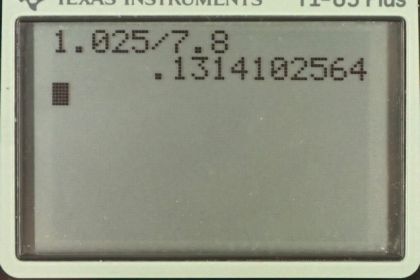Question
What fraction of an iron anchor's weight will be supported by buoyant force when submerged in saltwater?
Final Answer
Solution video
OpenStax College Physics for AP® Courses, Chapter 11, Problem 49 (Problems & Exercises)

vote with a rating of
votes with an average rating of
.
Calculator Screenshots
Video Transcript
This is College Physics Answers with Shaun Dychko. We're going to figure out what fraction of an iron anchor's weight is supported by the buoyant force of the sea water. So we're going to say that the buoyant force equals the weight of sea water displaced which is the mass of the sea water displaced times g, and the density of water is the mass of the water divided by its volume. We'll rearrange this to solve for mass by multiplying both sides by the volume of the sea water. The volume of the sea water is the same as the volume of the anchor because the anchor is completely submerged in the water and displaces an amount of water equal to the volume of the anchor. So we replace V w with V a. All of this gets substituted for m w the mass of the water here. So the buoyant force is the density of water times the volume of the anchor times g. So the ratio is going to be this buoyant force rho w V a over g, divided by mass of the anchor times g. Now we don't know what the mass of the anchor is but we can express it in terms of the anchor's volume by multiplying the anchor's volume by the density of iron. Fe is the chemical symbol for iron. So we substitute that for m a, mass of the anchor, and we get this ratio. There's a V a and a g factor on top and bottom which cancel. So the ratio of the buoyant force to the weight of the anchor is the ratio of the density of the water to the density of iron. So that's 1.025 times ten to the three kilograms per cubic meter density of saltwater, divided by 7.8 times ten to the three kilograms per meter cubed density of iron, which is a ratio of 0.13.
